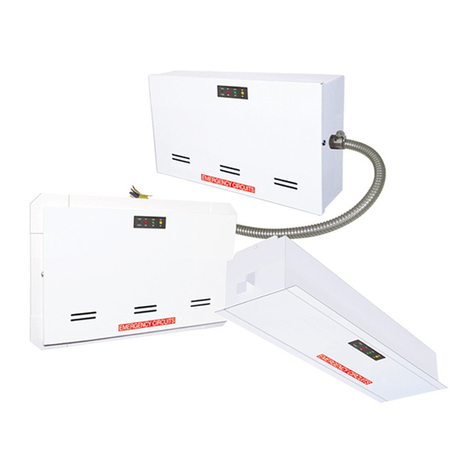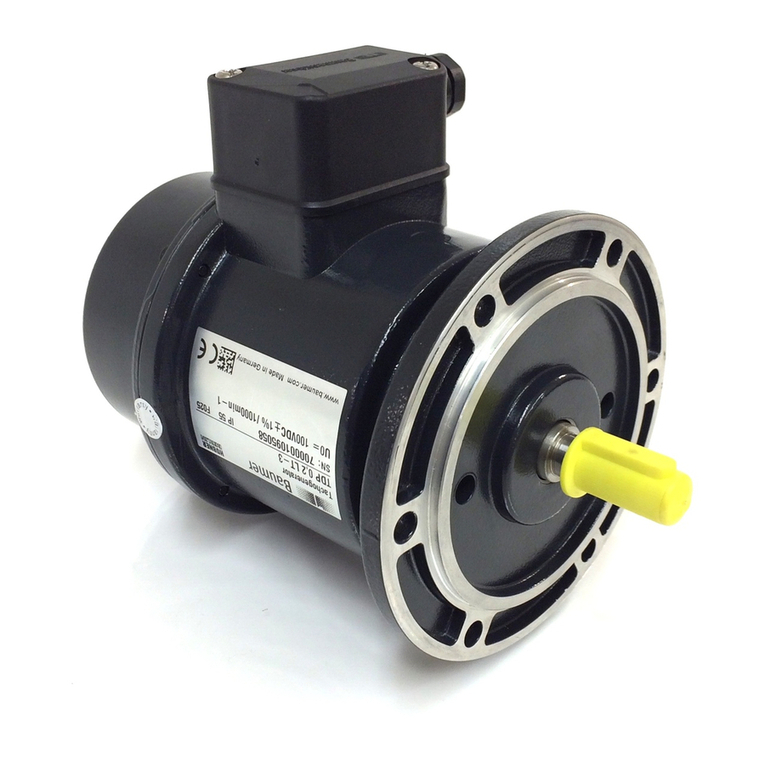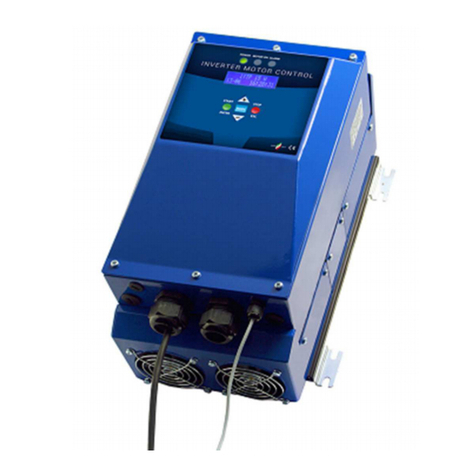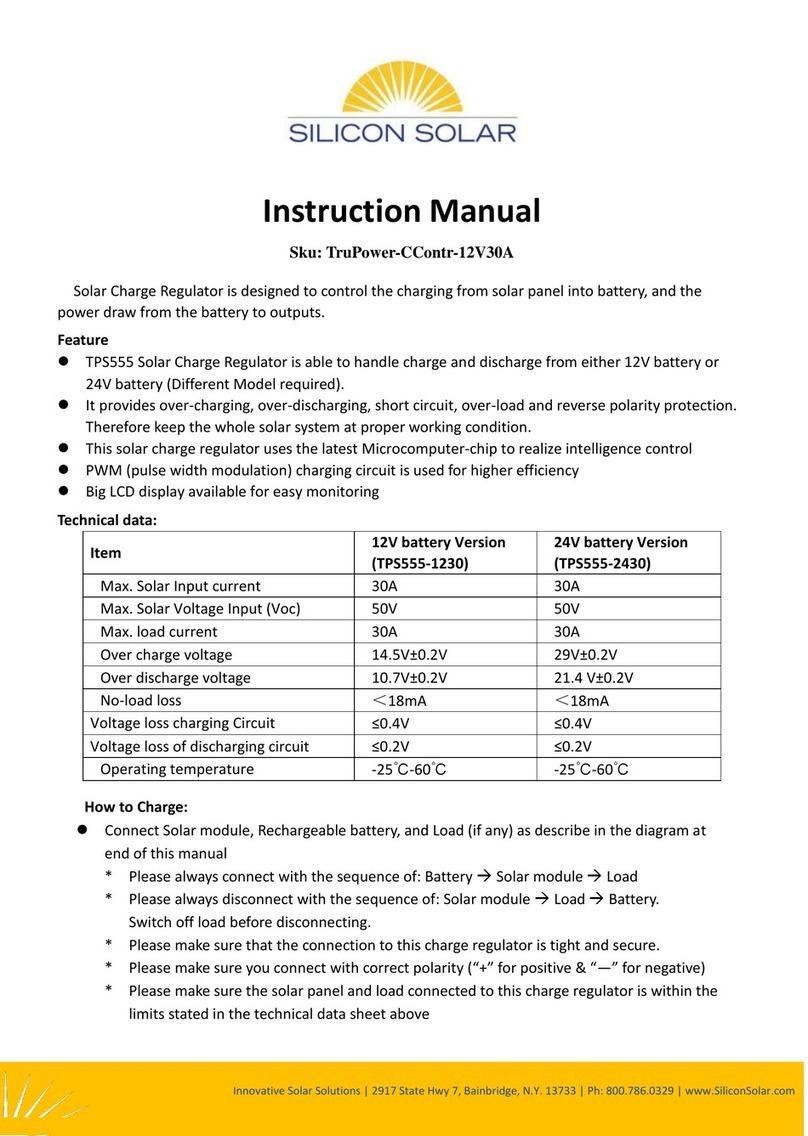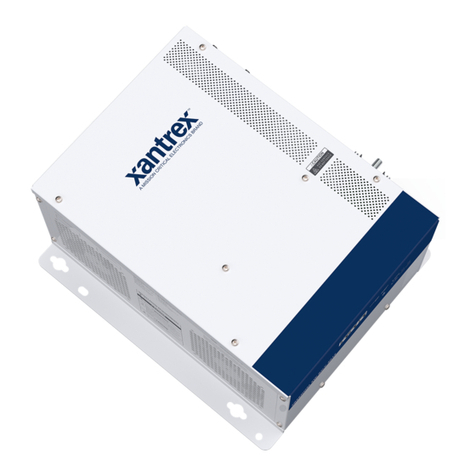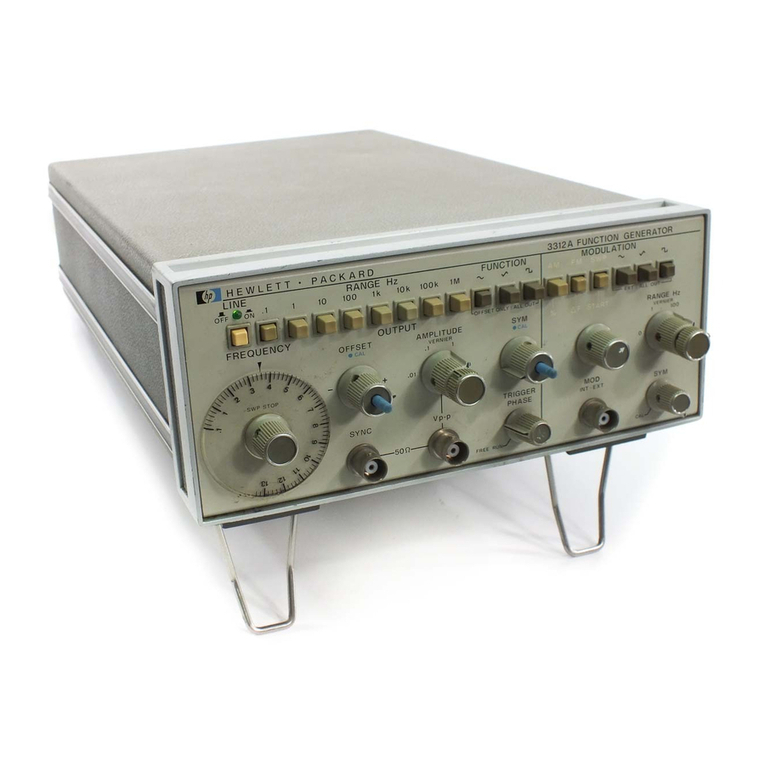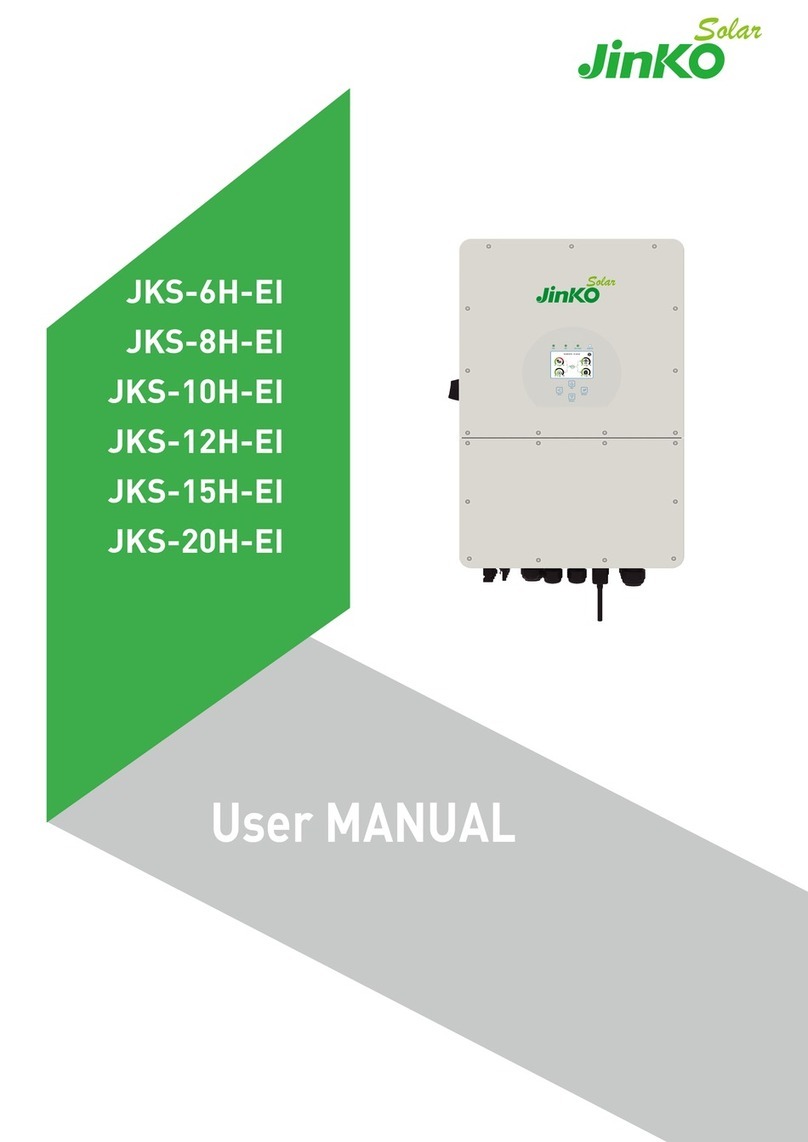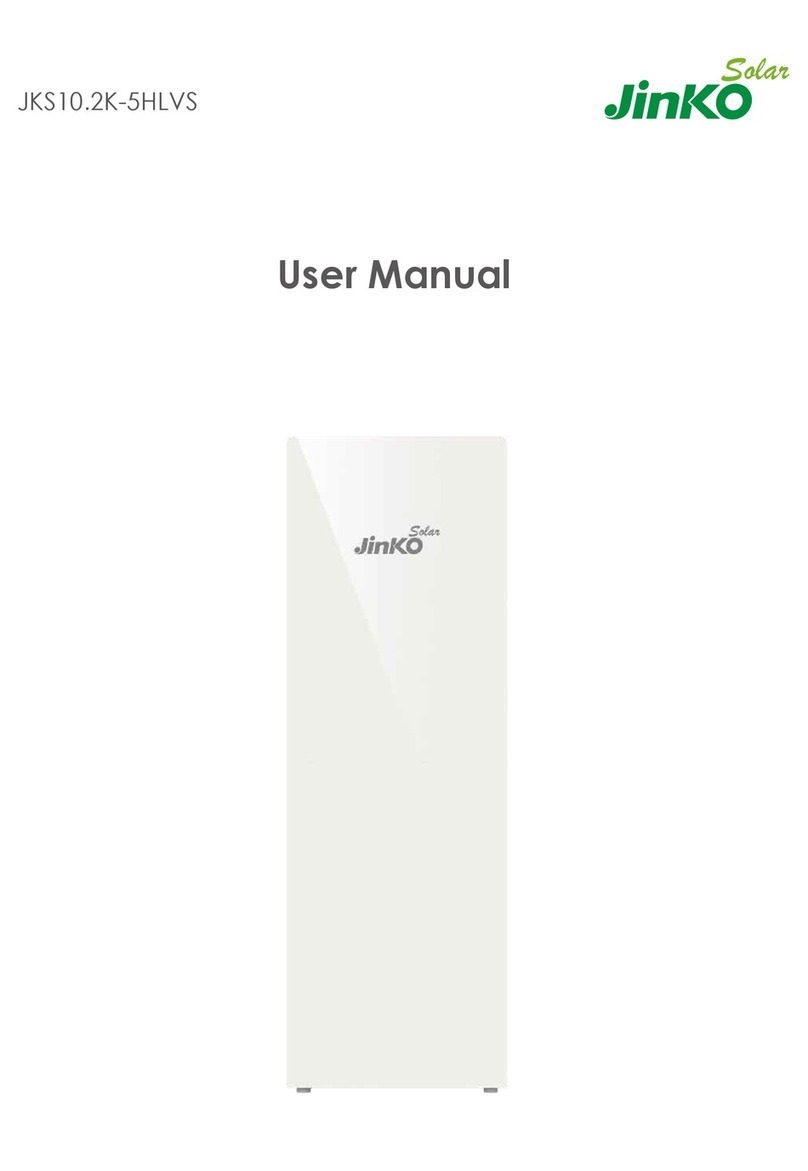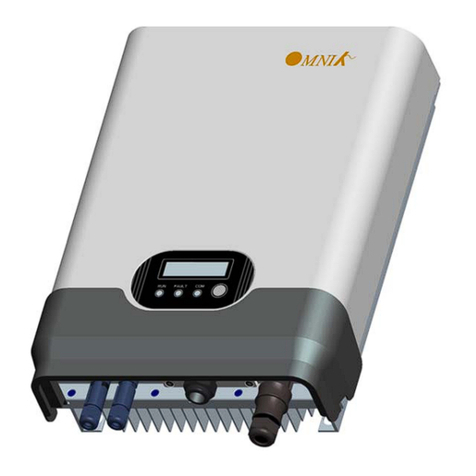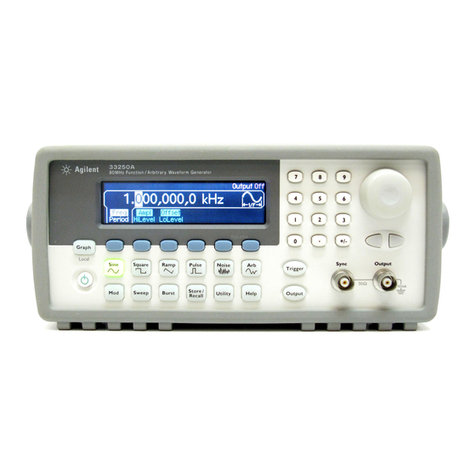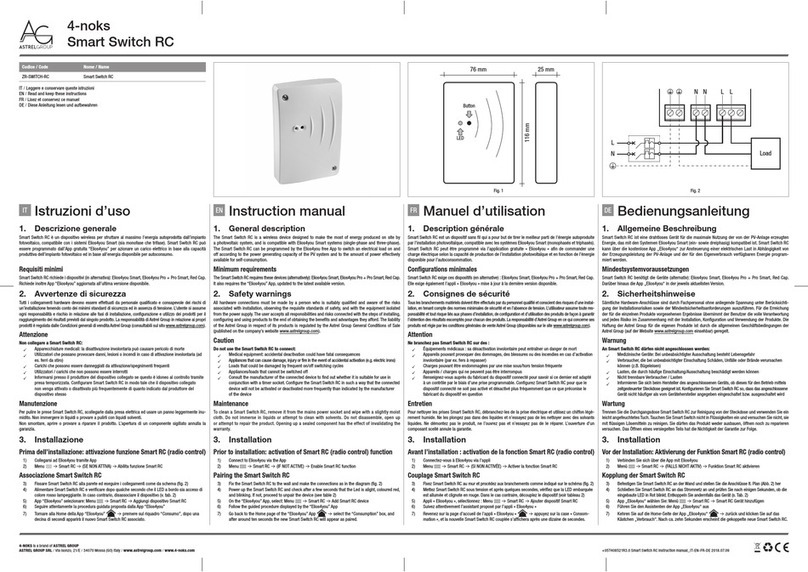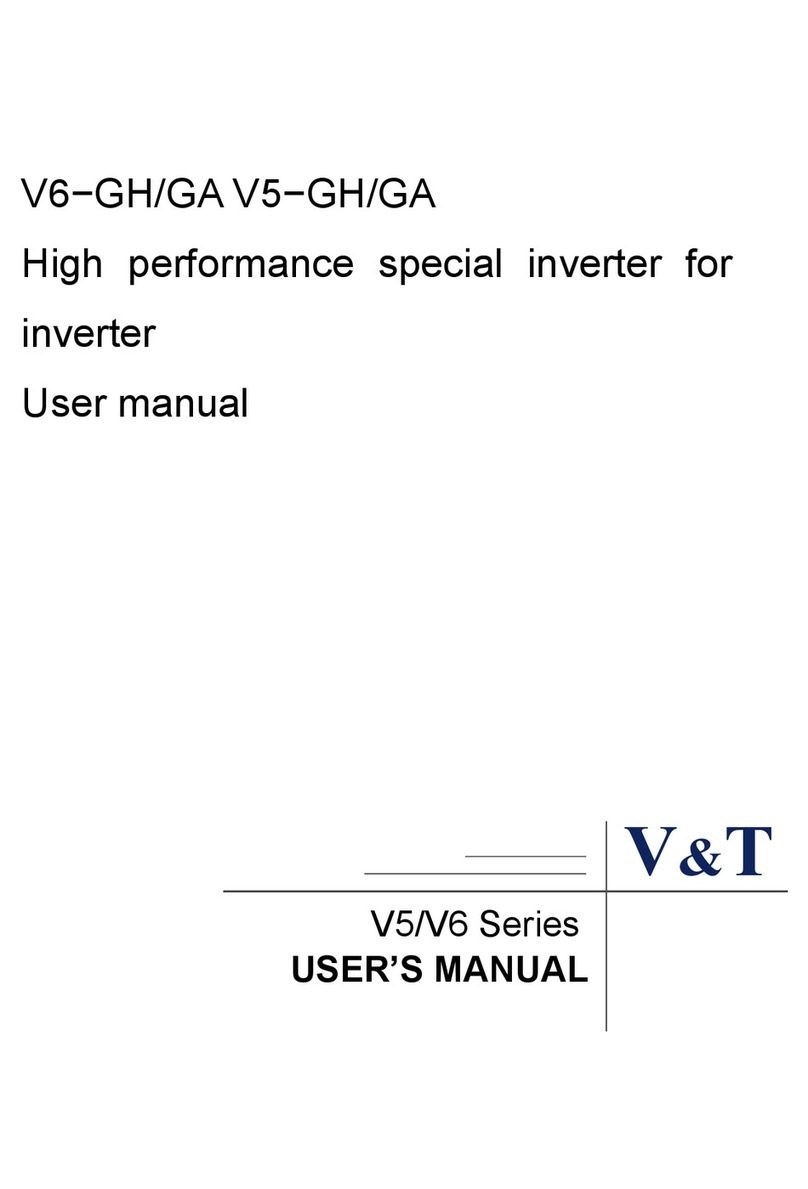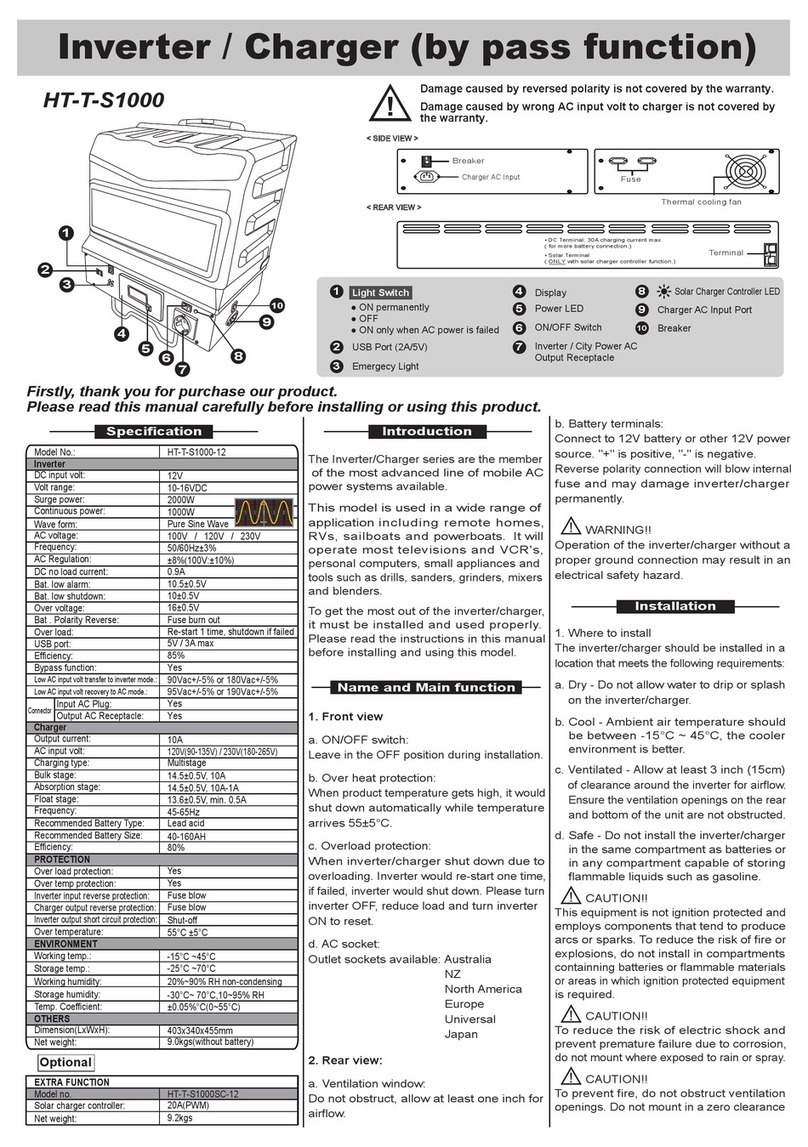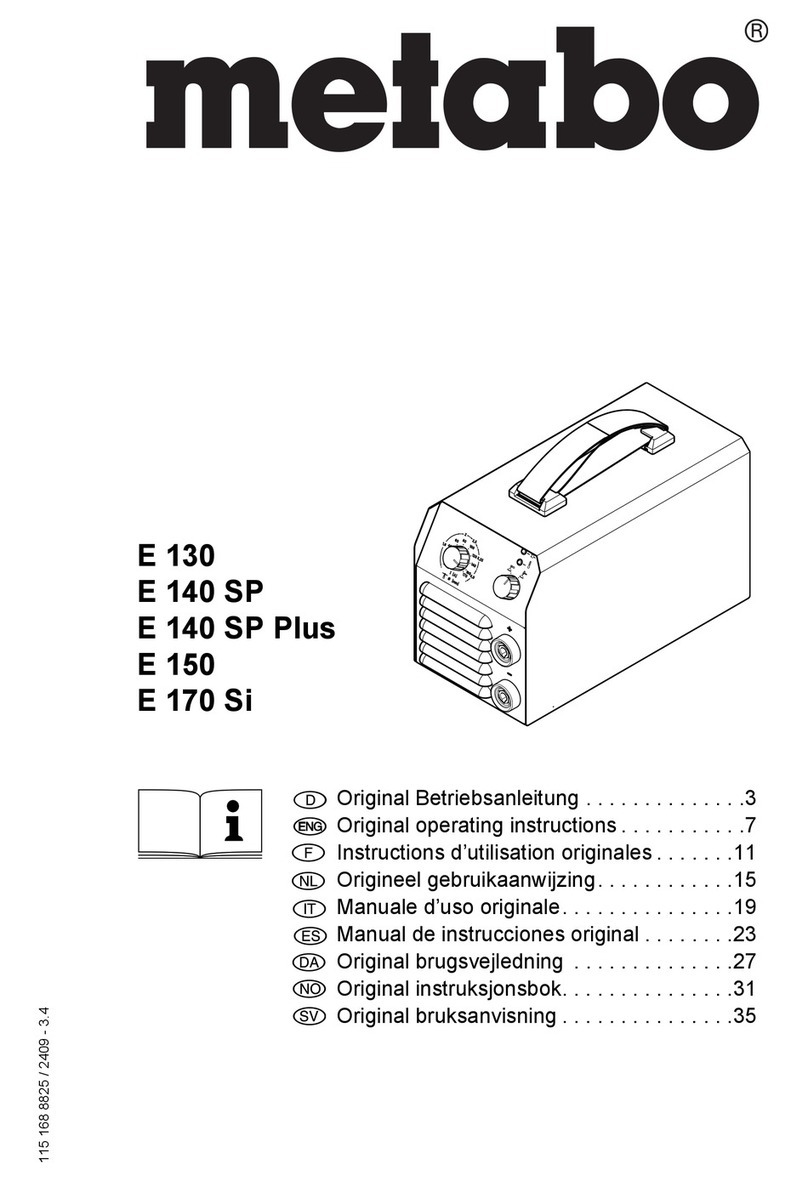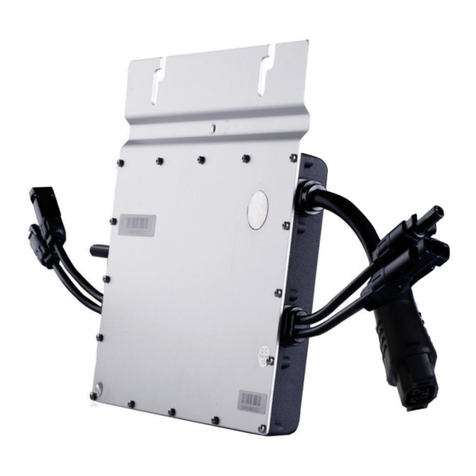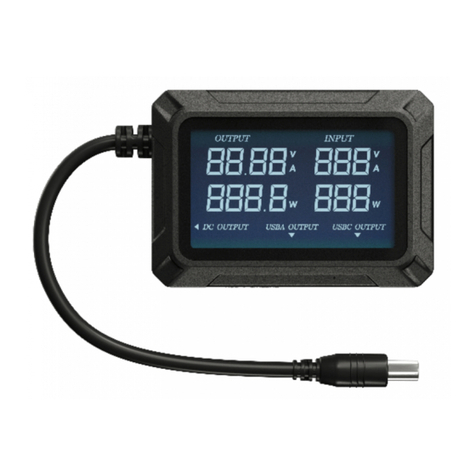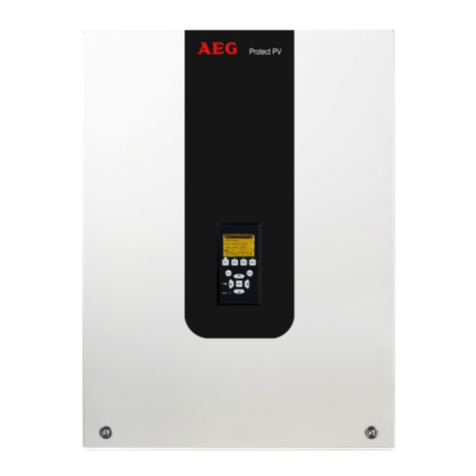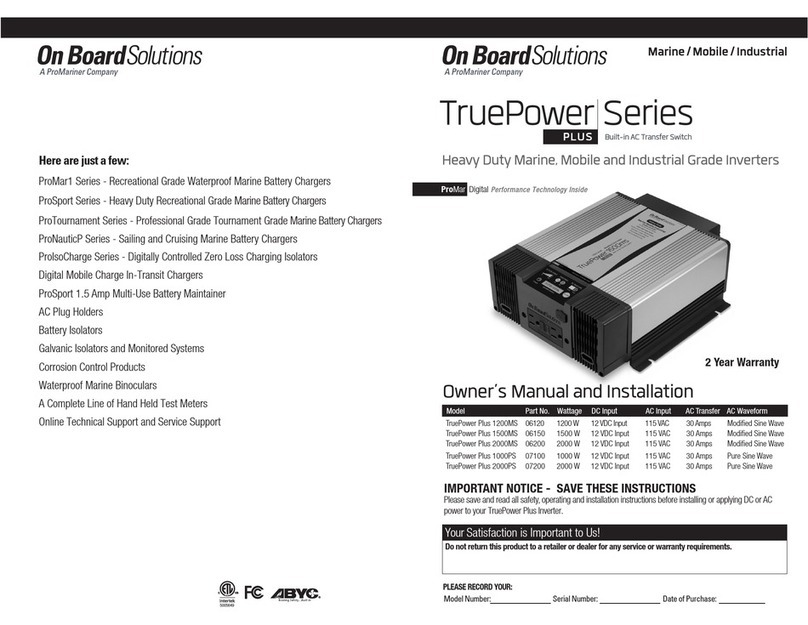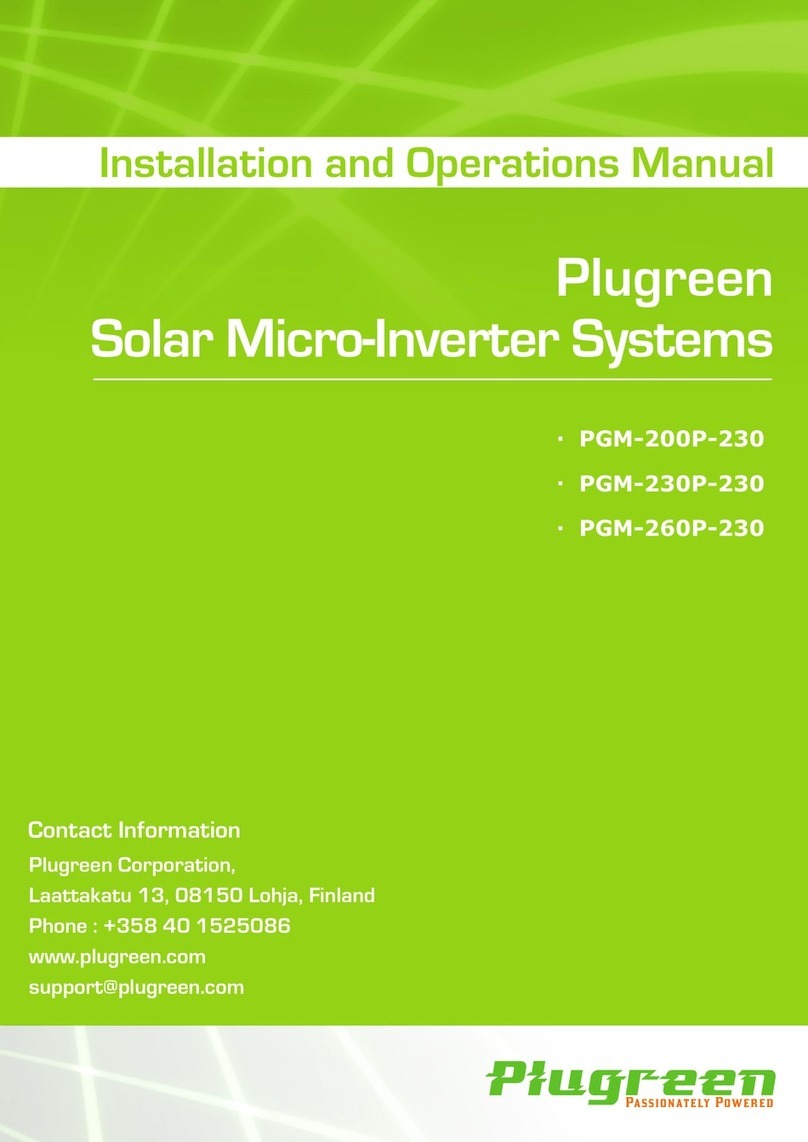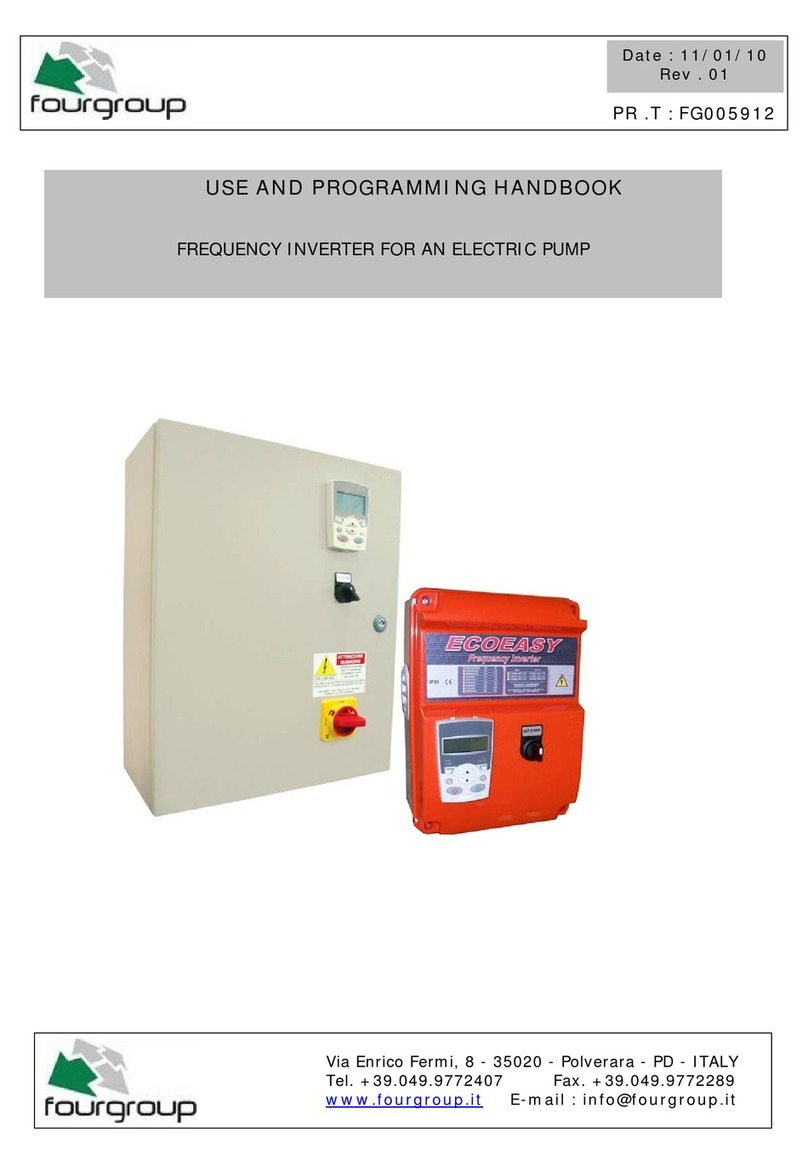
1 Brief Introduction
AC
Abbreviation for "Alternating Current"
DC
Abbreviation for "Direct Current"
Energy
Energy is measured in Wh (watt hours), kWh (kilowatt hours) or MWh (megawatt hours).
The energy is the power calculated over time. For example, your inverter operates at a
constant power of 4600 W for half an hour and then at a constant power of 2300 W for
another half an hour, it has fed 3450Wh of energy into the power distribution grid within
that hour.
Power
Power is measured in W (watts), kW (kilowatts) or MW (megawatts). Power is an
instantaneous value. It displays the power your inverter is currently feeding into the
power distribution grid.
Power rate
Power rate is the radio of current power feeding into the power distribution grid and the
maximum power of the inverter that can feed into the power distribution grid.
Power Factor
Power factor is the ratio of true power or watts to apparent power or volt amps. They are
identical only when current and voltage are in phase than the power factor is 1.0. The
power in an ac circuit is very seldom equal to the direct product of the volts and amperes.
In order to find the power of a single phase ac circuit the product of volts and amperes
must be multiplied by the power factor.
PV
Abbreviation for photovoltaic
BAT
BAT is an acronym for lithium or lead acid battery
Charging
An JKS hybrid inverter charger uses PV energy or grid energy to charge a must be
multiplied by the power factor.
Discharging
It means that the JKS hybrid inverter supplies the battery energy to the load
Wireless communication
The external wireless communication technology is a radio technology that allows the
inverter and other communication products to communicate with each other. The
external wireless communication does not require line of sight between the devices and
it is selective purchasing.
JKS-3~6HLVS-ABI Series is used to store energy generated by the photovoltaic cell
panels or energy from grid if it is allowed in the battery, also energy can be sent to
power grid through JKS-3~6HLVS-ABI for self consumption or when Grid power is
lost, JKS-3~6HLVS-ABI can be used as backup power.
JKS-3~6HLVS-ABI series has six kinds of type:
• JKS-3HLVS-ABI
• JKS-3.6HLVS-ABI
• JKS-4HLVS-ABI
• JKS-4.6HLVS-ABI
• JKS-5HLVS-ABI
• JKS-6HLVS-ABI
Note: we describe this series as “JKS” as below.
Note: In different country, we provide different power. Such as in Germany, we can
provide JKS-3~4.6HLVS-ABI, but we don't provide JKS-5HLVS-ABI and JKS-6HLVS-
ABI.
1.4 Product Description
This manual will provide the users who use the JKS-3~6HLVS-ABI Series of Jinko Solar
Co., Ltd(Short for Jinko as below) with the detailed product information and the
installation instructions. Please read this manual carefully and put this manual on
some place where is convenient to installation, operation, obtain. Any modifications
of Jinko, we will not notify the user.
JKS-3~6HLVS-ABI inverter must be installed by professional electrical personnel who
have obtained the certification of the relevant departments.
JKS inverter can be used for two different battery types, one is for lithium battery and
the other is for lead-acid battery.Jinko can only provide lithium battery that is
compatible with inverter, no lead-acid battery will be provided by Jinko as customer
can easily buy these from the market.
Installer can install JKS-3~6HLVS-ABI Series inverter rapidly, build communication
system or troubleshoot by reading this manual carefully. If you have any questions in
the process of installation, you can login in www.jinkosolar.com and leave some
message. Or you can call our service hotline :+61 1300 326 182.
1.1 Preface
1.2 Target Group
1.3 Glossary
